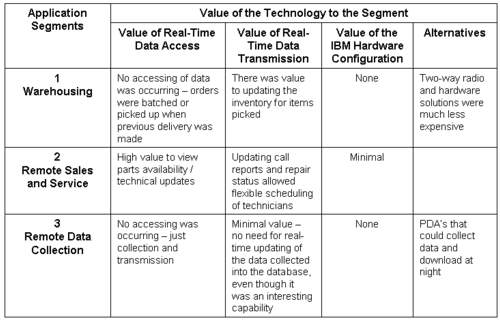Synopsis: Data Communications IBM: Technology in Search of a Market – Market Timing and Early Adopters
“DARTS” was a code name given by IBM to its data radio project in the mid-1980s. IBM developed a nationwide data network to move all classes of internal data. In addition, IBM entered a joint venture with Motorola to develop radio frequency data transmission capability. This very successful technology venture gave Field Service Technicians access to virtually any information they needed to more efficiently and effectively service customers.
The DARTS group was formed to commercialize the technology. The team introduced the technology to many beta customers and received enthusiastic feedback. Based on this research, the project team projected a $2 billion market, defined the offering as a product (a small PC with RF communications capability), and developed a pricing scheme based on selling time on the nationwide network.
As the team began to develop a launch strategy, it needed to identify the applications and markets that would be the best targets, project the market size, and determine how fast customers would adopt the applications. To do so, the team brought in outside consultants headed by Steve Bassill to evaluate the beta sites. The consultants learned that beta test customers had a wide range of perceptions about what they were testing, why they were testing it, and how the technology fit into their businesses. These perceptions varied from customer to customer and were not the same as the venture team’s initial projections. As the chart below demonstrates, the value of the technology was different for each application segment.

.In reality, every end-user required a substantially different hardware configuration. Unless IBM was willing to enter the custom hardware business, no opportunities existed for IBM within this market.
The project team determined the market would not be ready to adopt the “data” radio benefits for another five years. Secondly, the business model IBM had created would not work. A model based on the radio frequency network as the product was deemed to be the most appropriate. IBM saved millions of dollars by segmenting the market on its technology requirements.
